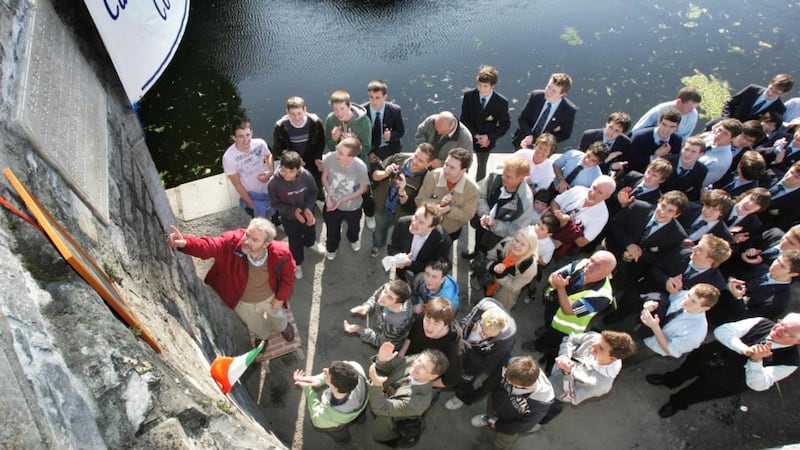Dublin’s new Rosie Hackett Bridge opens later this month, and there are now calls to name Cork Airport after Rory Gallagher. So isn’t it about time we named something after an Irish scientist?
There isn't a public statue, bridge or building honouring any of our scientists or mathematicians – university buildings, and the statues at Government Buildings of Robert Boyle and William Rowan Hamilton don't really count as public.
Here’s a proposal: let’s honour our most creative physicist, that same William Hamilton, not least because his equation helped to put a man on the moon. With DIT building a new facility where the equation was invented, and a new Luas line due to arrive there, the timing seems perfect.

Hamilton was born in Dublin in 1805, and spent all his working life as professor of astronomy at Dunsink Observatory. He was not much of an astronomer, however, but a creative thinker who made several profound contributions to physics and mathematics. His most important contribution – his theory of dynamics – laid the foundation stone for quantum mechanics. Today physicists, engineers and even economists use his “Hamiltonian” in their work. He also made a daring prediction about how light would behave, which was proved right and for which he was knighted.
In 1843, long before the space race, he had his Eureka moment. It was, he later wrote, like “a spark flashed forth”. What he invented that October day was a whole new type of algebra, one that would allow people to describe, in symbols, how something moves in three-dimensional space.
Hamilton called his new equations quaternions, because they had four components. Significantly, his algebra broke the fundamental rule of mathematics that says: multiplying three times four, for example, is the same as multiplying four times three. (In three-dimensional space, the order in which you do things is important.) Result? A new field was born, what is now called non-commutative algebra.
The equation came to Hamilton as he was walking by the Royal Canal in Dublin and, taking his pocket knife, he scratched the solution in the stonework at Broome Bridge. He spent the rest of his life trying to find a use for it. He was, however, 100 years ahead of his time: quaternions found their place in the 20th century, helping to orientate spacecraft and, later, in 3D computer graphics.
A household name
Hamilton was as creative a thinker as any of our writers and surely deserves to be
up there with James Joyce and WB Yeats. There have been a few initiatives, but nothing yet on a scale that would make him a household name.
There’s that statue at Government Buildings, a couple of postage stamps and several events for his bicentenary in 2005. There’s also a plaque at Broome Bridge, erected in the 1950s by a person who tried to have Hamilton recognised as a national hero: maths teacher turned politician Éamon de Valera.
Scientists and mathematicians from around the world regularly visit the plaque to pay homage, and every October an anniversary walk retraces Hamilton’s route along the canal from Dunsink to Broome Bridge.
Right now, the plaque is a little forlorn. But that will soon change: the new Luas BXD line will connect with the rail line there, and DIT is developing a new sports ground beside the canal. The college has also said it would consider naming the facility to reflect the historic connection with Hamilton.
As well as being arguably our greatest scientist, there is another reason why Ireland should honour Hamilton: he hoped that his work would bring honour to the country, writing that he wished it would “remove the prejudice which supposes Irish men to be incapable of perseverance”.
Surely it’s now time to put Hamilton on our cultural map. We have statues and stations and bridges named after our poets and politicians, our revolutionaries and trade unionists. Just walk down Dublin’s O’Connell Street, and you will see what I mean: from Parnell to O’Connell, by way of Larkin and William Smith O’Brien.
So how about it? Quaternion Quarter? Hamilton Station? Or even, Quaternion Station – and let us have the world's first commuter train station named after an algebraic equation.
Mary Mulvihill is a science writer. Her latest book is Ingenious Dublin: A Guide to the City's Marvels, Discoveries and Inventions. She tweets @IngeniousIE











